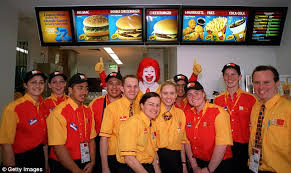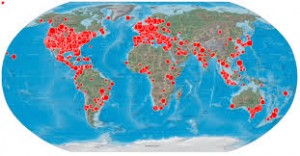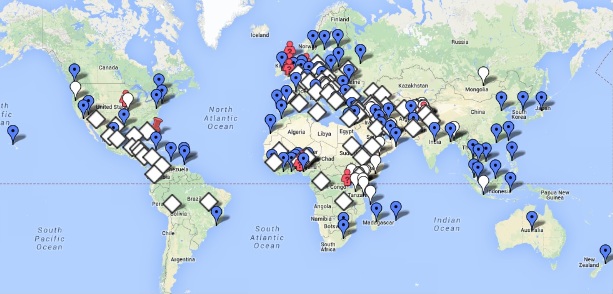Tim Curtis, ERS’ Director for International Operations, has recently been working with clients in the Horn of Africa developing business resilience strategies. One profound and prevailing risk for many of the international organisations is the security risk that is being propelled by Al Qaeda sponsored insurgencies. Tim breaks it down for us.
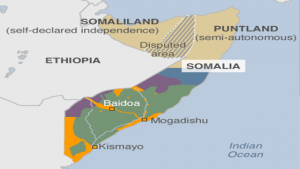 Last year, just after the 25th birthday of Al Qaeda, I wrote an article likening the kinetic targeting and destruction of the global jihadist networks to a game of Whac a Mole. Since 2013, Al Qaeda has indeed become significantly weakened, but, conversely, its affiliate groups have become far more resilient, adaptable and bold. Over this time Al Qaeda has transitioned to being a ‘holding company’ for a series of like-minded ‘operating companies’. It reduced its own operational conduct in favour of providing support to its core affiliates as they grew in size and scope across Africa, the Middle East and Asia.
Last year, just after the 25th birthday of Al Qaeda, I wrote an article likening the kinetic targeting and destruction of the global jihadist networks to a game of Whac a Mole. Since 2013, Al Qaeda has indeed become significantly weakened, but, conversely, its affiliate groups have become far more resilient, adaptable and bold. Over this time Al Qaeda has transitioned to being a ‘holding company’ for a series of like-minded ‘operating companies’. It reduced its own operational conduct in favour of providing support to its core affiliates as they grew in size and scope across Africa, the Middle East and Asia.
Al Qaeda’s strength is in being stateless and a-national. Its brand of terrorism has, by design, been proliferated across regional terrorist networks and local Jihadist groups. Consummate planning, audacity and ruthless disregard for  human life has enabled an intractable presence of Al Qaeda’s affiliates across Muslim enclaves in the Horn of Africa, Yemen, Syria, Iraq, northern Pakistan, Afghanistan and South East Asia. Their ability to operate in all these locations is indicative of the resilience and improved capacity of Al Qaeda’s affiliates to evolve amidst political chaos and disorder; and for them to defy national and international efforts to ‘find, fix and finish’ the networks and therein lies the problem.
human life has enabled an intractable presence of Al Qaeda’s affiliates across Muslim enclaves in the Horn of Africa, Yemen, Syria, Iraq, northern Pakistan, Afghanistan and South East Asia. Their ability to operate in all these locations is indicative of the resilience and improved capacity of Al Qaeda’s affiliates to evolve amidst political chaos and disorder; and for them to defy national and international efforts to ‘find, fix and finish’ the networks and therein lies the problem.
Do you recall the successful US Special Operations Force raid on Osama bin laden at Abbottabad in Pakistan? A high-risk operation of significance, but in retrospect, of limited long-term strategic value. If this and similar operations had been effective, these kinetic, largely military efforts, including the attrition of key members and leadership, should by now have rendered the Al Qaeda organisation hors de combat. That this is not the case demonstrates the hydra-chameleon tenets of Al Qaeda and the wider network of affiliates to survive. A new long-term strategic approach to counter the extremist ideology is needed and the start point for that must be to “know your enemy”.
Franchising Al Qaeda
In some recent presentations I have used the analogy that Al Qaeda is a franchise; kind of like McDonalds (in making this comparison, I refer solely to McDonalds’ multinational business model). Al Qaeda’s success is a result of similar unconventional, non-linear and intangible systems and techniques. The franchise similarities are transferable; and uncanny. Here’s how they do it:
Characteristics of A Fast Food Franchise
- Allows Supported Regional Diversification
- Ensures rapid and concurrent expansion of the brand. Fast and decentralised development allowed McDonalds to grow through 36,000 restaurants worldwide.
- Aim: Global fast food franchise domination.
- Locations are selected for the “customer catchment”.
- Is cost effective for the HQ. Most people couldn’t tell you where that HQ is in the world…. But could tell you the location of their closest restaurant. Sounds familiar?
- Ensures understanding of local issues, including language and culture.
- Recent profit downturns have McDonalds reliant on franchise performances with a restructure so that 90% of restaurants will be franchised.
- Franchises are autonomous.
- Global employers. Provides basic training and up-skilling and, in many locations, a sense of identity.
- Fair wage, allowances and benefits. Offers management opportunities to the relatively young.
- Inspires youth inside a unified brand.
- Always a willing catchment of workers for internationally recognised franchised brands.
- You can have your cheeseburger and eat it too.
- The brand spreads quickly. Marketing is the important enabling effort. It rapidly builds brand awareness and allegiance.
- Instant credibility and identity.
- Business Resilience
- The franchise structure is very difficult to dismantle. Arguably it is indestructible.
- It is an intractable part of the local, national and regional landscapes
- They maintain tremendous purchasing power and controls over their supply chain.
Mirrored Characteristics of Regional Al Qaeda Franchises
- AQ have 72 registered entities as registered by the United Nations. Many more are likely to not (yet) appear on the UN sanctions lists.
- Aim: Global Jihad.
- AQ has shown financial and operational support to local Islamic militancy groups’ in their ‘struggles’. Provides finances for bribing officials or to pay salaries. Experts in international money transfers using traditional money exchange systems (“Hawala”).
- AQ breeds allegiance while concurrently convincing previously unaligned Jihadist groups that their battles are one in the same (it is Allah’s wish); despite any localised differences.
- Al Qaeda affiliate cells are autonomous. Destruction of one cell has little or no affect on others.
- Human Resources (Labour)
- Far from dissuading young Islamic radicals, al Qaeda’s type of asymmetrical warfare has served to inspire. Recruit the young, desperate, and disenfranchised and indoctrinate them (teach them how to make cheeseburgers the same way).
- Puritanical ideologies are espoused across impoverished locations, often to masses of uneducated and unemployed youth, who are
often looking for a guiding beacon in their lives and to be part of a community with Islamic principles. Islam’s religious tenets which promise a future reward (heaven) are a strong psychological attraction.
- Associating with al Qaeda offers a wide range of rewards to would be affiliates including access to thousands of fighters; often battle hardened. Access to specialist bomb makers, communicators and weapons trainers.
- AQ endorse the payment of stipends to families of jailed fighters.
- Image and Reputation
- AQ’s brand has multiplied because of regional environments that are beset with political instability, conflict and disenfranchised youth with anti-Western sentiment. It is easy to clone the model: including ideals, principles, branding and image.
- Local struggling militant groups are offered international credibility when they publicly align with Al Qaeda; while still retaining their own locally identifiable brand. Although there are obvious risks that accompany an overt affiliation, not least of which is taking on of new enemies such as the U.S. Government and its allies.

- Business Resilience
- The most pronounced of al Qaeda’s regional enterprises seem almost impervious to international-led efforts to disable their networks.
- These groups exist and expand by exploiting sources of tension within host nation governments and the underlying social, cultural and religious issues.
- Their members conduct selective terrorist attacks to endorse the jihad which helps drive recruitment and further develop support.
- AQ are able to use safe havens and proven smuggling routes. These routes are safe for people, weapons, drugs and equipment.
Putting McDonalds out of Business?
The logic to disable the organisations is the same for any franchise; including Al Qaeda. Firstly, it is important to recognise that ‘a McDonalds’, the store down the road, is not ‘McDonalds’; similarly an AQ affiliate is not Al Qaeda. Both are asymmetric businesses. So trying to dismantle the AQ affiliate (or the McDonalds down the road) in a linear way through ‘find, fix and finish’ logic is akin to the Whac a Mole arcade game. Try this and watch the “hydra chameleon” in action. Another McDonalds will appear around the corner, and the Al Qaeda affiliate will resurrect itself to again flourish and grow.
More proof needed? Name a country where the international community and its accompanying military operations have been effective in combatting Al Qaeda? Conversely, think of the wide number of countries where this type of action has actually gone the other way and encouraged the growth of insurgencies; nurtured by Al Qaeda.
So what are the key components of a strategy that will strike at the heart of AQ’s remarkably adaptive joint venture it has with its affiliates? Here’s my 5-step action plan:
1. Contain! Geographically and financially. Close down the supply chains at key hubs. Choke the hydra slowly. Take a manoeuvrist and not an attritionist view. Forget the conventional counter insurgency logic of find fix and finish. While it wins battles, kinetic attacks can never on its own defeat the viral nature of franchises.
2. Educate! Improve education in locations where vulnerable people have been brainwashed to believe in the rewards that will flow to them for their involvement in the Koranic concept of war (or how highly nutritious a cheeseburger is). Education is a generational plan, providing the opportunity to develop essential life skills, which can be put to positive use. Through education the vulnerable will no longer be reliant on making cheeseburgers. Rather they will have other more attractive options, which will then spread throughout the community providing personal and economic growth. Change the ideology and behaviour. Win the underground information war.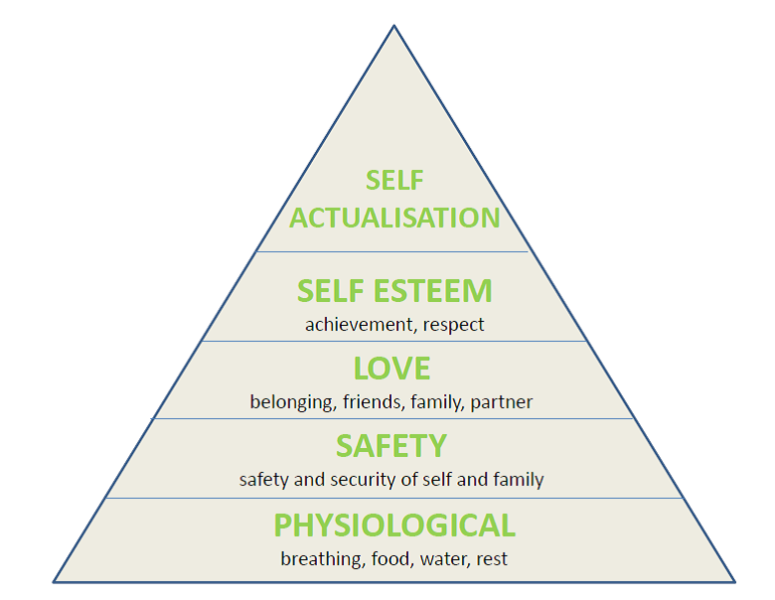
3. Ownership! Develop and implement programs that support local authorities and give them all the credit for projects. Capacity build through this process. Handover projects to the communities. Create a sense of neighbourhood pride. Ownership prevents wars.
4. Enterprise! Encourage entrepreneurialism, particularly small to medium enterprise development. Support it through nurturing microeconomics including local infrastructure improvements. At the simplest level improve streetscapes to discourage crime and encourage longer local trade and communal interaction. It prevents wars.
5. Community! Re-read Maslow’s hierarchy of needs. Start with the provision of security with a little ‘s’. Security is an enabler in so far as it develops confidence, trust and allows communities greater freedom of movement. Community based security is the key in rejecting franchises. Forget kinetic action in all locations except where ground is being held by Al Qaeda affiliates. Communities win wars because they own the real estate.
About the Author
 Tim Curtis is the Director for International Operations at Executive Risk Solutions. He is a former SAS Officer who is now armed with an MBA and a decade of experience supporting international businesses in volatile environments. In 2012-13, Tim raised a kidnapping prevention and response capability in support of a NYSE listed insurance company and 3600 policy holders globally.
Tim Curtis is the Director for International Operations at Executive Risk Solutions. He is a former SAS Officer who is now armed with an MBA and a decade of experience supporting international businesses in volatile environments. In 2012-13, Tim raised a kidnapping prevention and response capability in support of a NYSE listed insurance company and 3600 policy holders globally.


